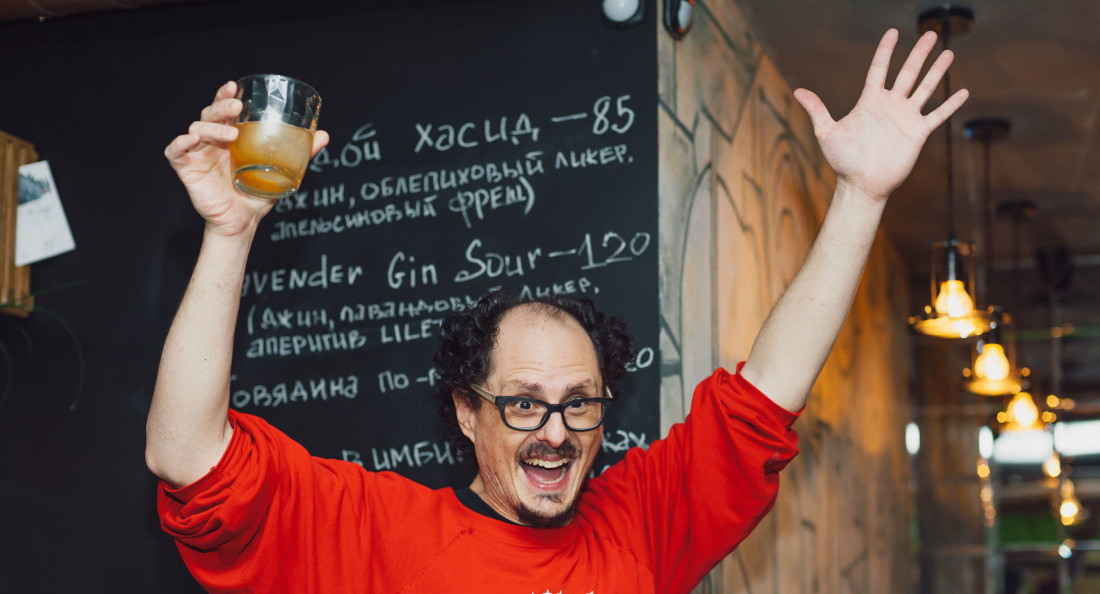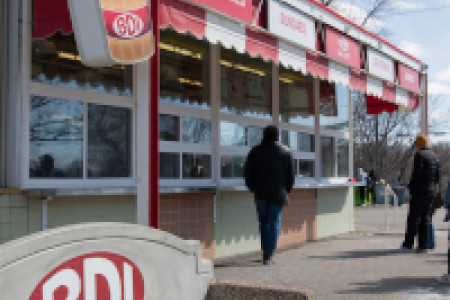Ushering a Yiddish renaissance
Put a Yid On It! channels ancestral language through arts
Throughout its thousand-year history, Yiddish formed the linguistic foundation of a rich world of literature, music, folklore and fine arts.
At its peak, more than 10 million people across the world, predominantly Ashkenazi Jews in central and eastern Europe and North America, spoke the language. As a result of the Holocaust and cultural assimilation that followed the Second World War, the number of native speakers dramatically plummeted.
Despite attempts to eradicate the language, Yiddish is far from dead, and a younger generation of artists, like Montreal-based rapper Socalled, are fueling a revival.
This month, Socalled is among several Yiddish language artists who will keep the flame going at a new festival presented by the Rady JCC. Running from Feb. 7 to 11, Put a Yid On It! - Festival of New Yiddish Culture will premier its inaugural Yiddish arts program, ranging from 1930s cinema to contemporary hip hop with a klezmer flare.
Shira Newman, the festival director and coordinator of arts and adult programming at the Rady JCC, drew inspiration from Yiddish cultural festivals across the continent, such as Quebec’s KlezKanada.
“We have a large Jewish community. We have an active arts world and a Jewish community that’s interested in the arts,” Newman says. “I just really wanted to create something like that in Winnipeg.”
Some time ago, scholars and partners Jonah Corne and Monika Vrečar began digging through and analyzing a treasure trove of Yiddish films.
Vrečar’s background in communication and Corne’s background in film studies coalesced into a research project looking into the equally fascinating and complex world of Yiddish cinema.
“Suddenly, we started noticing all these different things ... we were arriving to them from very different perspectives,” Vrečar says. “One of the things (was) that Yiddish cinema generally seemed to be very obsessed with communication, with technology of communication and with disconnection, because it’s a diasporic cinema.”
On Feb. 7, the festival’s first day, Corne and Vrečar will launch their book Yiddish Cinema: The Drama of Troubled Communication at The Handsome Daughter.
As Corne describes, the origins of Yiddish cinema can be traced back to the early 1900s silent era. By the 1930s, it entered a “golden age,” which quickly – and devastatingly – changed.
“At the same moment that Yiddish cinema was sort of at its high point, it was also, essentially, if not snuffed out, dealt with this massive, massive blow by, obviously, the Second World War and in the Holocaust, which, in Europe, decimated all of the communities where Yiddish was being spoken,” Corne says.
Though history led to a dark age of Yiddish cinema, a renaissance followed as institutions such as the National Centre for Jewish Film emerged in the later 20th century.
Today, as younger generations take a vested interest in reviving the Yiddish language through the arts, Newman believes the ancestral tongue is experiencing a resurgence. She points to Berlin’s thriving and diverse Yiddish music scenes and Montreal’s Yiddish cultural centres as hubs for the arts.
“There’s been a real interest in looking back at that and connecting with this very deep, ancestral part of our experience and then kind of bridging it with the present,” she says. “There’s reclaiming but also modernizing.”
Put a Yid On It! runs from Feb. 7 to 11. To view the full program and purchase tickets, visit bit.ly/4bcLbmA.
Published in Volume 78, Number 16 of The Uniter (February 1, 2024)






